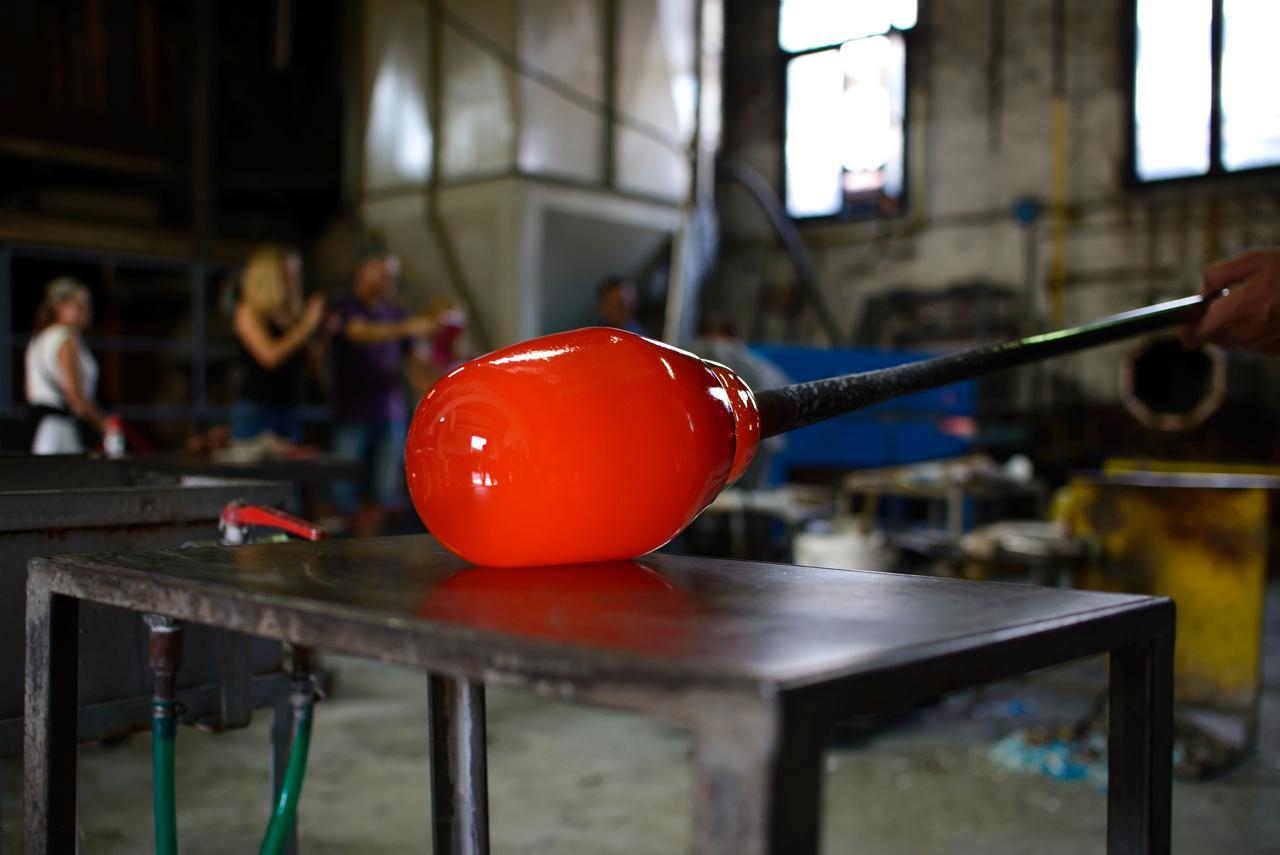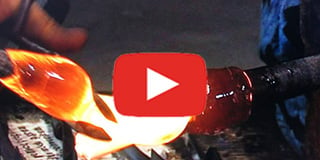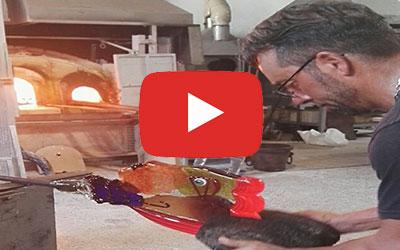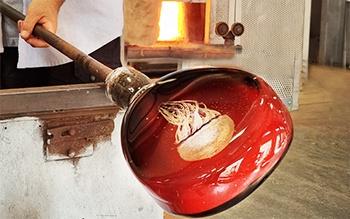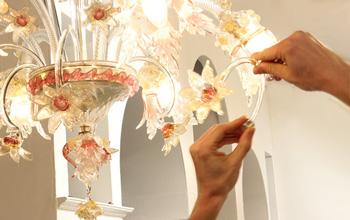The furnace’s two favourite techniques are, undoubtedly, the one of the blowing glass and the one of the massiccio, or massello, or full glass: these are three synonym expressions that seek to define the marvellous sculpture process of the glass matter. Unlike the blowing one – capable of confer lightness by the fusion of voids and filled spaces to the artwork – the massello technique is structured like the dynamic elaboration of one quantity of matter, or like a progressive addiction of vitreous graft around a primary central nucleus. The horizon of sculpture possibilities is limitless: from classic horses of roughly 20 cm to life-size animals; from miniatures of human figures to colossuses in the most disparate positions; from massive abstract artworks to elegant furniture capable of enriching any room with the spell of a form of art which cannot be found.
The Master’s main tools…after his own hands
In Murano furnaces the Master’s creative genius and ability are already revealed from centuries, constituting time to time a pantheon of names, faces, and moreover hands: heritage in constant expansion of the glass’ island, generation to generation. Fundamental support to the creation of an artwork by the massello technique is the arsenal of tools which the artist uses within his daily, fascinating work.
The scagno, particular seat on which the master frequently sits to facilitate his work. Fitted with two large armrests cladded of metal sheets, on which the artist can put the rod in constant rotation, facilitating the manipulation of the bolo (the first quantity of incandescent glass extracted from the crogiolo) and the possible, viscous successive addictions.
See how a Glass Tiger Sculpture is made in this video:
The canna – metal tube completely drilled, often simply called ferro – is long roughly 1,5 m and a diameter of 2/4 cm. It is the main tool in both the blowing techniques and the massello one. In the latter, such rod is used to pick on one extremity the vitreous mass, to work it later with other tolls. The rod is constantly kept in rotation for avoid imperfections given by gravity.
The puntello, rod used by an assistant of the master ordered to put other agglomerates in contact with the present one on the rod of the Master, in order o create grafts of various dimensions and forms. The puntello can get to Master’s hands, in some particular passages.
The borselle, which are metal plier of main importance in the massello technique. They are used to stretch the viscous glass and there are many types of them, in accordance to the specific mansions that they have to carry out: da siègar – that is, to saw – for divide two quantities of matter; da pissegar, to string the glass lengthening it in some points; a sculeoto or a scuregoto, ending with two protuberances similar to spoons; a gelosia, with the extremities bearded with a particular frame which is impressed on the glass; a spin de pesse with a frame similar to a fishbone; lissie if it has a plain structure, not destined to the pressure decoration, but only to the stretching action.
The tagliente, similar to a robust scissor with straight or rounded blades, according to the desired cut which has to be done in the first passages of the glass processing.
The tajòl, a kind of knife with a square tip used to interact with the vitreous mass aiming at shape it.
The magiosso, tool which seem a small pot, with a cave sum and a handle, completely in wood. It greets the incandescent sphere to confer, in combination with the constant rotation of the rod, a greater regularity.

But…how is a glass sculpture realised, in practise?
These objects are the fundamental ones which the Master uses within the furnace: they are a rigid selection within an armament of tools many more hefty and multifaceted. In furnace, in the sculpture practise there can be distinguished two main style: the alla prima production, namely the creation of a subject, such as a little horse or flower, starting from one quantity of glass, without adding in a second time and heating up the artwork during the creative process. It is made all in once, even though in many phases – necessary for each artwork, challenging at the level of dimension of technique complexity. Taking as example a human figure of one meter in size – a piece of considerable dimensions, thus, even from the point of the weight, since the glass is full – to the Master and his assistants will be worthwhile proceeding in steps. The head will be obtained from an incandescent sphere, prior uniformed through the use of the magiosso, and later shaped with the borselle, by various operation of pulls and pushes of plate or cutting. Throughout the process, according to the richness of details, the artwork should take a calda, namely being put into the kiln for roughly 10 seconds to re-heat the glass for making it malleable and optimal for the process again.
In analogous way, the other parts will be realised, from arms to torso and legs, obviously with the use of suited tools in accordance to the anatomic element which has to be reproduced.
For example, for shaping muscles and clothes will be used both borselle and tajol, while for separating fingers of hands and foots will be used the taglianti.
Various addiction of viscous glass will be put on the single block: the servente, that is, the Master’s assistant, picks on a rod the proper quantity of matter and, following the Master’s indication, he stops the flow of the glass starting the moulding. In some cases, over the “calde” into the kiln, it might be used mobile gas rods, in order to throw beams of flame in specific zones of the artwork. Warmth and expertise technique of the Master and team’s colleagues will be necessary conditions to complete the final assembly, pick of the spell that is such process of the Murano island.




